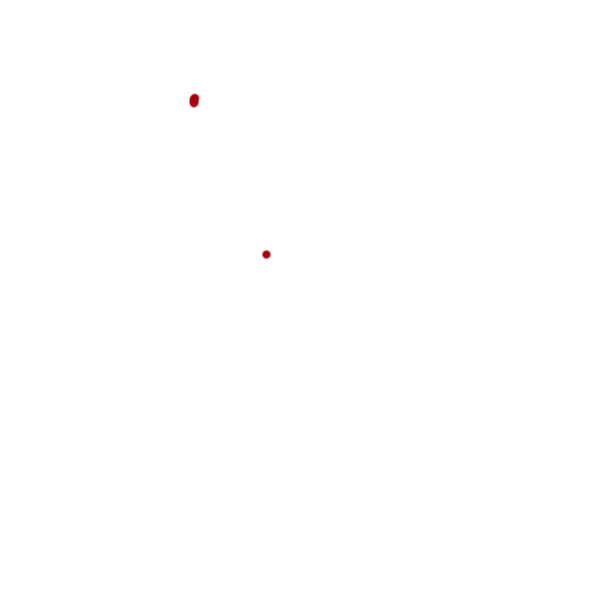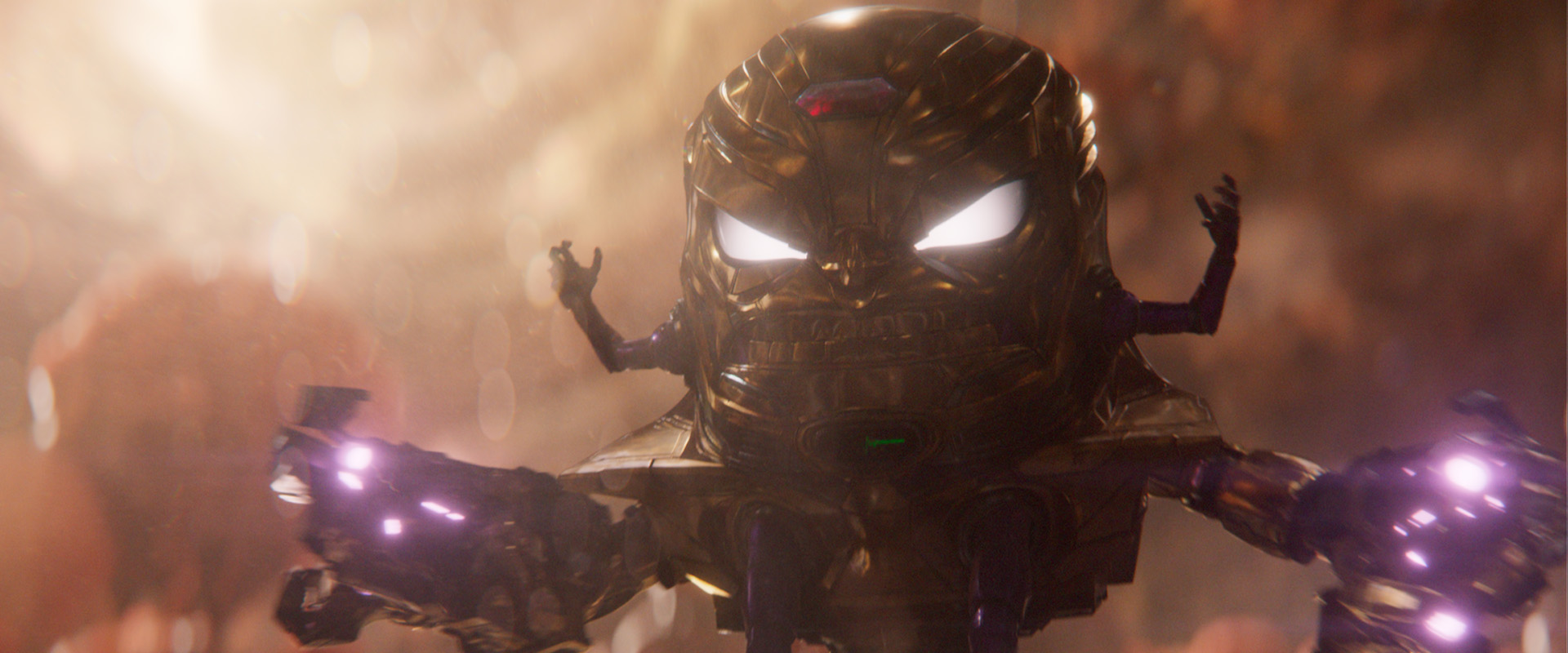How Digital Domain Went Full CG to Create M.O.D.O.K. for ‘Ant-Man and The Wasp: Quantumania’
03.03.23Proprietary Masquerade 2.0 Facial Capture System and Neural Networks Help Award-Winning VFX Studio Create a Villain That Won’t Soon be Forgotten
LOS ANGELES — March 3, 2023 — Over the course of 31 movies, seven live-action episodic series and a handful of animated and standalone projects, the Marvel Cinematic Universe has introduced some of the most interesting – and bizarre – villains ever seen on screen. With the arrival of Marvel Studios’ Ant-Man and The Wasp: Quantumania and the introduction of its eagerly anticipated Phase Five, the MCU unveils arguably its most unusual villain yet with M.O.D.O.K., a five-foot-tall flying face, brought to life by award-winning VFX studio Digital Domain.
“Over our 30-year history, Digital Domain has created some of the most iconic CG characters ever seen on film, including Thanos, Benjamin Button, the Ready Player One cast and more, but this really is a first,” said Dave Hodgins, Digital Domain VFX supervisor. “Part of the fun of working with Marvel Studios is that they keep coming up with some of the most imaginative characters and environments, which allows us to create something that fans will remember.”
The character of M.O.D.O.K. – an acronym for “Mechanized Organism Designed Only for Killing” – has been a staple of Marvel Comics since his debut more than 50 years ago. Originally created in a lab by contemporary scientists, M.O.D.O.K. has been reimagined for the MCU and continues the story of the villainous Darren Cross (Corey Stoll) from 2015’s Ant-Man. The film explores what happened after he entered the mysterious Quantum Realm and was reborn in a new, monstrous form, leading the Digital Domain team to create a fully CG version of the character — driven by the actor’s performance.
Digital Domain began by capturing footage of Stoll and testing different looks, starting with various proportions. Multiple iterations were considered as the team sought a balance between a bizarre creature and a photoreal humanoid. The team even tested a version that included the character’s comic-accurate bowl haircut, along with other styles. Ultimately, Digital Domain and Marvel Studios decided on a version of the character that resembled Stoll’s face and hairstyle but at 5.72x the actual size, measuring 173 centimeters from head-to-toe and 124.77 centimeters from front to back.
To drive the performance, Stoll appeared in a capture volume wearing an HMC (head-mounted camera) and performed his scenes while watching the live-action footage from the set (the production used a large, gray 3D-printed cutout of his face as a stand-in). Stoll’s performance was then processed through Digital Domain’s proprietary Masquerade 2.0 facial capture system, which uses neural networks to map out the actor’s face and create working, photorealistic animation.
Although Masquerade was able to generate a model that accurately conveyed Stoll’s performance, the team at Digital Domain still needed to add a few finishing touches by hand, including – and perhaps most importantly – the eyes. The VFX team studied the human eye in order to determine the best way to expand it and retain a realistic look. Using Maya for design and Mari to texture, artists built the character’s eyes by hand, down to the tear ducts and folds within the eye. The team then used V-Ray 5's Random walk SSS skin shader, which maintains the base forms of the face and lets the fine pore details be more readable.
From there, the team at Digital Domain still had to address the unique movement limitations of the character. During Stoll’s performance, the actor frequently used full body mannerisms to convey emphasis. The character of M.O.D.O.K., however, is a face held in place by a metallic chassis that constrains his jaw and limits any gesticulations. Using a custom deformer in Maya, animators removed any additional movements from Stoll’s footage while also altering his jaw to reflect the constraints of the character.
Finally, Digital Domain developed a new blood flow pipeline that leverages machine learning and creates a library of data from scanned data of Stoll. Once the team began working on the final version of M.O.D.O.K., the library of data was triggered by Digital Domain’s proprietary Weighted Pose Space Deformation (WPSD) system, which calculates edge strain differences to drive the maps so no animator input is necessary. The team capped it all off by adding a heartbeat monitor (that changes in the film as needed), a metal battle mask inspired by the character’s comic book roots and a handful of futuristic weapons created to fit the specifications of the film.
Digital Domain’s work on Ant-Man and The Wasp: Quantumania marks the latest in a line of collaborations between the VFX studio and Marvel Studios that stretches back more than a decade. It includes blockbuster features such as Black Panther: Wakanda Forever, Doctor Strange in the Multiverse of Madness and Spider-Man: No Way Home, along with recent episodics including She-Hulk, Ms. Marvel and the upcoming Secret Invasion.
Ant-Man and The Wasp: Quantumania is playing now, exclusively in theaters.
About Digital Domain
Digital Domain is the pioneer of creating transportive experiences. Throughout the last 30 years, Digital Domain has grown to lead the visual effects industry, expanding globally the arm of virtual humans and visualization. Digital Domain’s rich legacy consists of hundreds of feature films and episodes, thousands of advertising, game cinematics and experimental immersive experiences. A creative force in cutting-edge technologies, Digital Domain has brought exceptional artistry to Academy Award-winning blockbusters of Titanic, What Dreams May Come and The Curious Case of Benjamin Button, Marvel Cinematic Universe titles crushed all time worldwide box office, such as Avengers franchise, and Stranger Things made a splash with Season IV.
As the first independent visual effects studio to successfully enter Greater China, Digital Domain has further paved the way towards virtual race since 2016. Leaning into technologies of artificial intelligence and virtual reality allows Digital Domain to create photorealistic and emotionally expressive virtual humans, all in real time, as well as provides an advanced medium for human-computer and human-human interactions in diverse virtual scenarios.
Digital Domain Holdings Limited is listed on the Hong Kong Stock Exchange (Stock code: 547). Digital Domain has ten locations including Los Angeles, Vancouver, Montreal, Beijing, Shanghai and Hyderabad.
Digital Domain Official Website - WWW.DIGITALDOMAIN.COM


